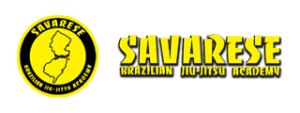BJJ: Breaking a turtle down versus riding
BJJ: Breaking a turtle down versus riding
BJJ: Breaking a turtle down versus riding, that is the question. When it’s time to attack an opponents turtle position, I teach my students to start by breaking an opponent down to a hip. This immediately reduces their athletic potential and makes them much more controllable so that you can focus on applying your attacks. However, there are going to be times you cannot do this on a tough opponent. At that point, you will have to get hooks in and ride the opponents turtle while they are still on their knees. Here, our Savarese BJJ Academy (www.bergencountybjj.com) student Cait faces this dilemma in a training session with Mariana. This is where the breaking a turtle down versus riding situation comes into play. Be sure to maintain a tight chest to back connection at control both sides of the body, otherwise you can slip off and end up underneath your opponent. Interestingly, the more your opponent resists being off balanced and broken down to a hip, the more he will have to widen his base and open himself up to your hooks and riding. In addition, the more he tightens up to resist the insertion of your hooks and riding, the easier he will be to off balance and break down to a hip. So the two modes of attacking turtle work very well as a dilemma.
